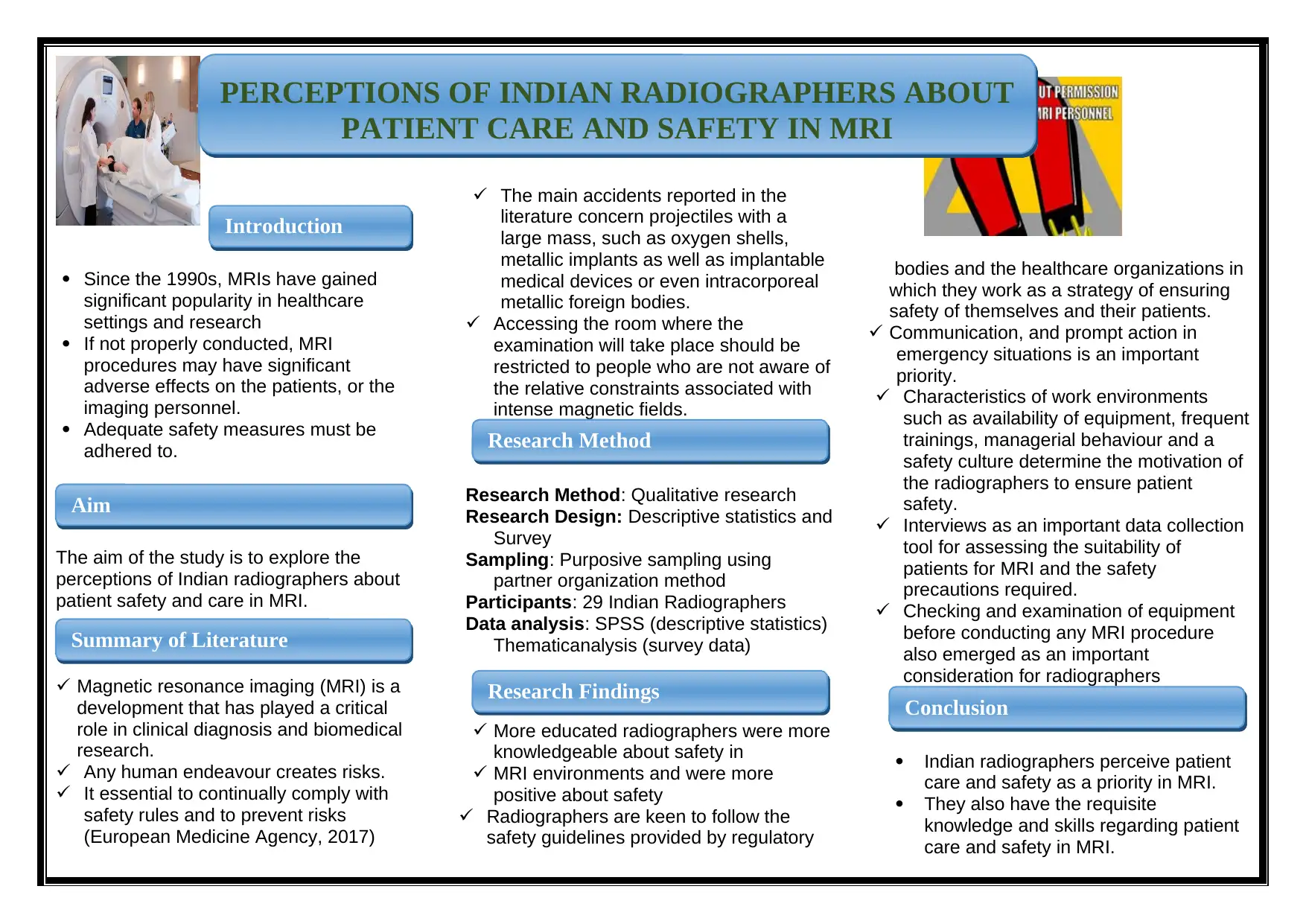Perceptions of Indian Radiographers on MRI Patient Care and Safety
VerifiedAdded on 2022/08/12
|1
|413
|13
Project
AI Summary
This project is a qualitative research study focusing on the perceptions of Indian radiographers regarding patient care and safety within Magnetic Resonance Imaging (MRI) environments. The research, conducted as part of an MSc Medical Imaging dissertation, aims to explore radiographers' knowledge, practices, and attitudes towards patient safety in MRI settings. The methodology includes a literature review, descriptive statistics, and thematic analysis of survey data collected from 29 Indian radiographers using purposive sampling. The findings indicate that more educated radiographers demonstrate greater knowledge of MRI safety protocols and a positive approach to patient safety. Radiographers prioritize following safety guidelines from regulatory bodies and healthcare organizations, emphasizing communication and prompt action in emergencies. Work environment characteristics, such as equipment availability, training, and managerial behavior, also significantly influence radiographers' commitment to patient safety. The study concludes that Indian radiographers consider patient care and safety a priority and possess the necessary skills and knowledge. The project is designed to provide insights into the challenges and best practices related to patient safety in MRI, offering valuable information for healthcare professionals and students. The study used a survey form to gather data on the radiographers' opinions about several topics, including the importance of patient information, waiting times, communication, and the procedure itself.






![[object Object]](/_next/static/media/star-bottom.7253800d.svg)